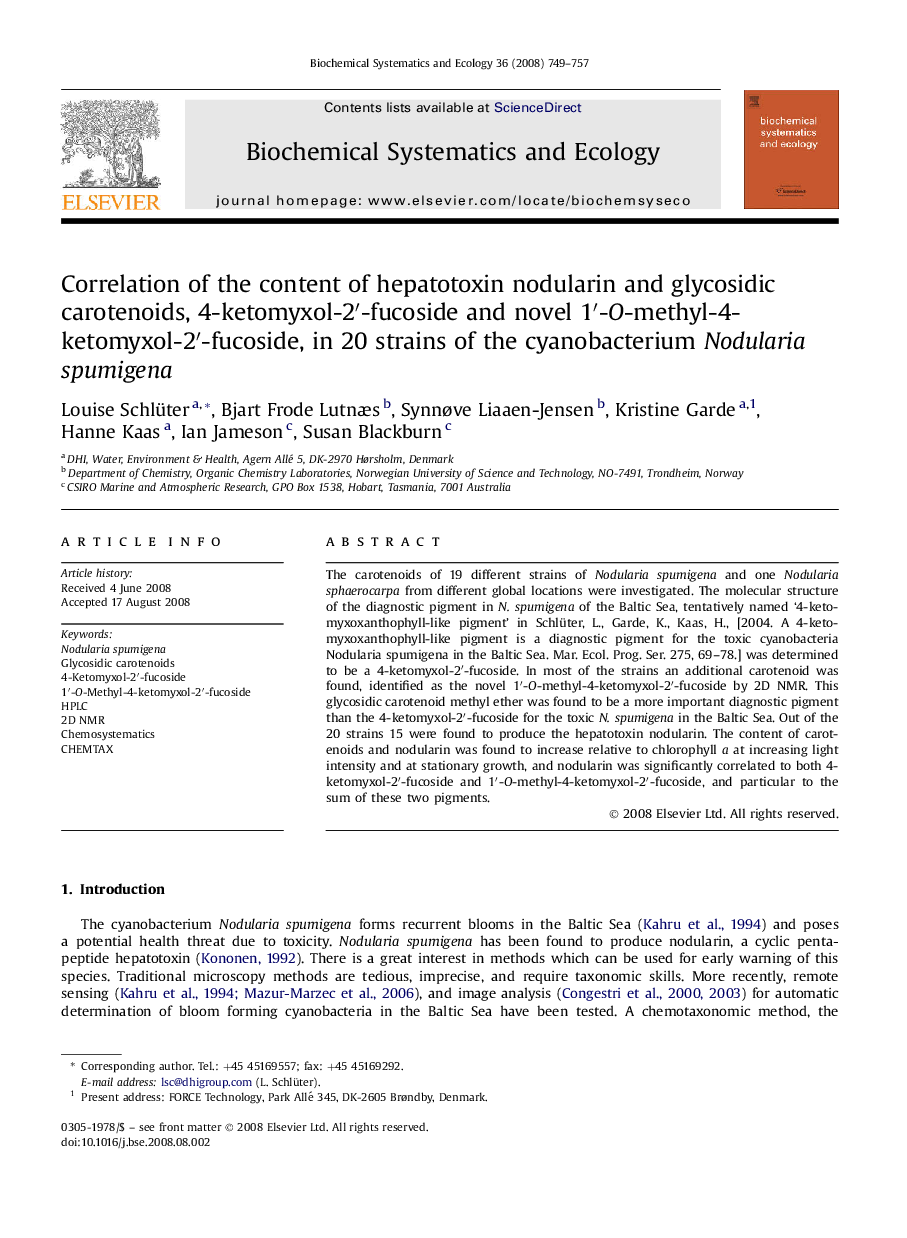| Article ID | Journal | Published Year | Pages | File Type |
|---|---|---|---|---|
| 1352361 | Biochemical Systematics and Ecology | 2008 | 9 Pages |
The carotenoids of 19 different strains of Nodularia spumigena and one Nodularia sphaerocarpa from different global locations were investigated. The molecular structure of the diagnostic pigment in N. spumigena of the Baltic Sea, tentatively named ‘4-keto-myxoxanthophyll-like pigment’ in Schlüter, L., Garde, K., Kaas, H., [2004. A 4-keto-myxoxanthophyll-like pigment is a diagnostic pigment for the toxic cyanobacteria Nodularia spumigena in the Baltic Sea. Mar. Ecol. Prog. Ser. 275, 69–78.] was determined to be a 4-ketomyxol-2′-fucoside. In most of the strains an additional carotenoid was found, identified as the novel 1′-O-methyl-4-ketomyxol-2′-fucoside by 2D NMR. This glycosidic carotenoid methyl ether was found to be a more important diagnostic pigment than the 4-ketomyxol-2′-fucoside for the toxic N. spumigena in the Baltic Sea. Out of the 20 strains 15 were found to produce the hepatotoxin nodularin. The content of carotenoids and nodularin was found to increase relative to chlorophyll a at increasing light intensity and at stationary growth, and nodularin was significantly correlated to both 4-ketomyxol-2′-fucoside and 1′-O-methyl-4-ketomyxol-2′-fucoside, and particular to the sum of these two pigments.
